The Danube is not blue — it’s teal!
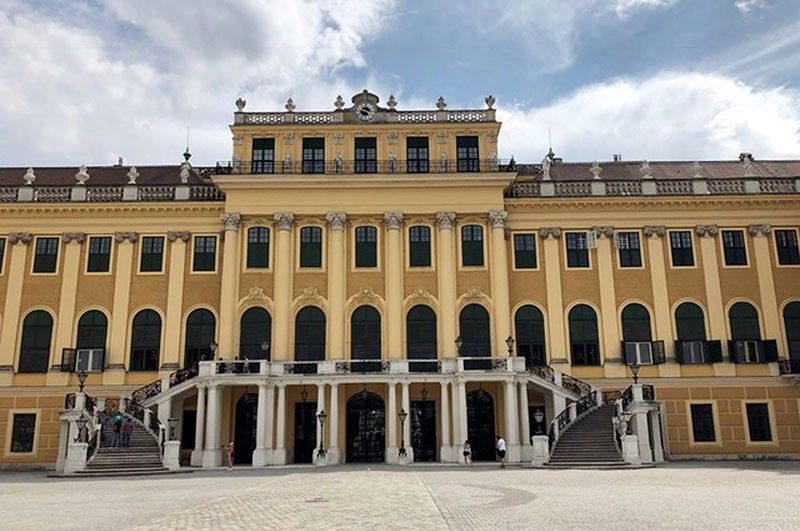
The Danube is the second longest river in Europe (the Volga is the longest) and it meanders through 10 countries in Europe — Germany, Austria, Slovakia, Hungary, Croatia, Serbia, Bulgaria, Romania. Moldova, and Ukraine — and through 20 million people. It starts in the Black Forest of Germany, in Donaueschingen, and empties into the Black Sea. It was the long-standing frontier of the Holy Roman Empire and has witnessed stories of kings and sailors, battles and victories, trade and commerce. It was, and still is, an agent of change by bringing religion, people, and produce from one place to another.

The Imperial Carriage was the most elegant coach in the Vienna court. Used in parades, the throne on wheels showed the power of the monarchy. Empress Elizabeth (nicknamed “Sisi,” she had the body of a wasp with the tiniest waistline) used this carriage for her coronation in1867 at St. Matthias Church in Budapest amidst great rejoicing.
The Danube River Basin is a UNESCO World Heritage site. The International Commission for the Protection of the Danube has 14 member states, along with the European Union. This group meets twice a year to safeguard free navigation and protect its environment.
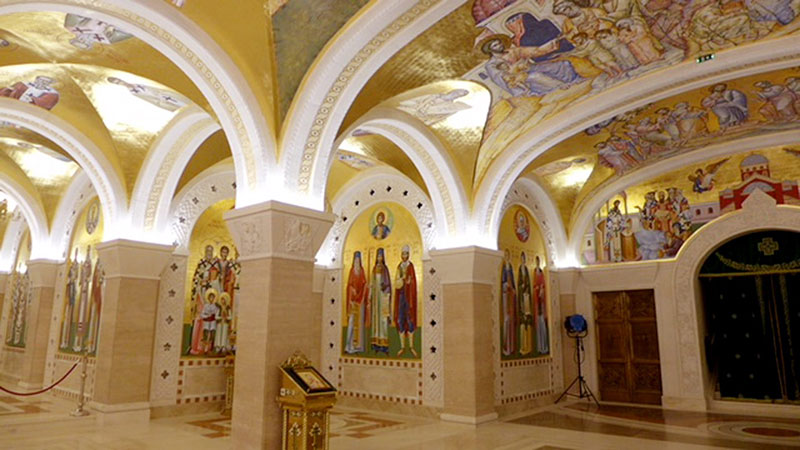
The crypt in the lower floor of the Church of Saint Sava, a Serbian Orthodox church in Belgrade. It ranks as one of the largest Orthodox place of worship in the world.
A comfortable way to enjoy a navigable river as the Danube is to go on a cruise, as it leisurely moves from one (East European) capital city to the next. It also passes through locks, verdant forests, summer houses with their fishing boats, medieval fortresses.
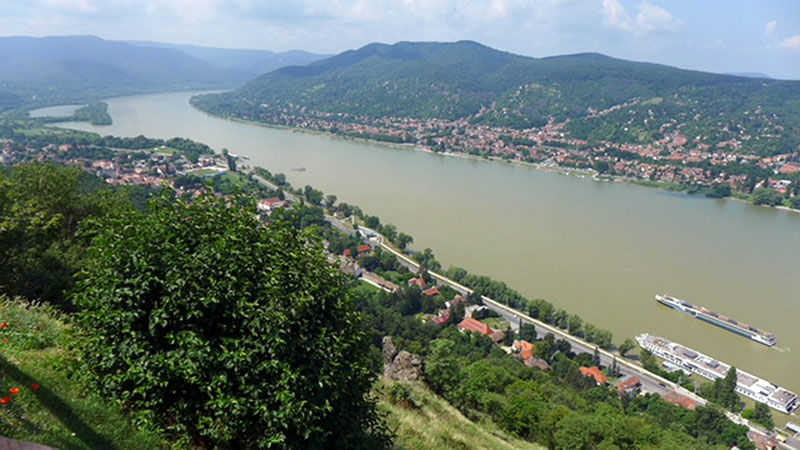
The Danube Bend is a curve of the Danube in Hungary, near the city of Visegrád. Perhaps the thick foliage that line the river banks is the reason why the Danube is not blue, but a rich bluegreen or teal.
From the 14th to the 19th centuries, the Ottoman Empire fought against the Kingdom of Hungary and later with the Austrian Hapsburgs to control the Danube.
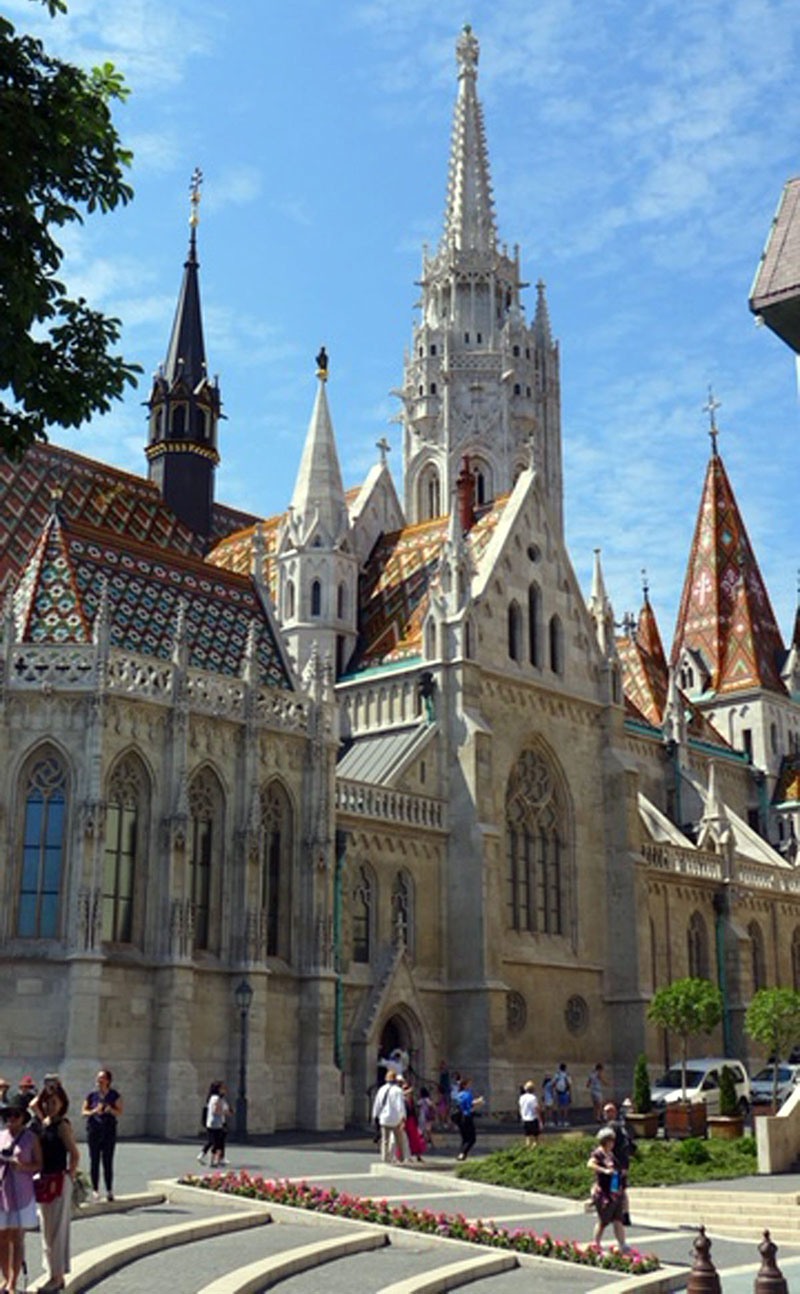
The massive Matthias Catholic Church is in the compound of the Fisherman’s Bastion, a UNESCO World Heritage site.
Vienna is the most populated city on the Danube. It is a beautiful city with art and music and culture at every nook and cranny. In the past, the Hapsburgs were the dominant force in Eastern Europe for more than six centuries, with their empire extending as far east as the Black Sea and Vienna as its capital. The assassination of the Austrian heir, Franz Ferdinand, signaled the end of the dynasty. The First World War, Austria was reduced to a provincial capital by Hitler and was bombed by the Allies.
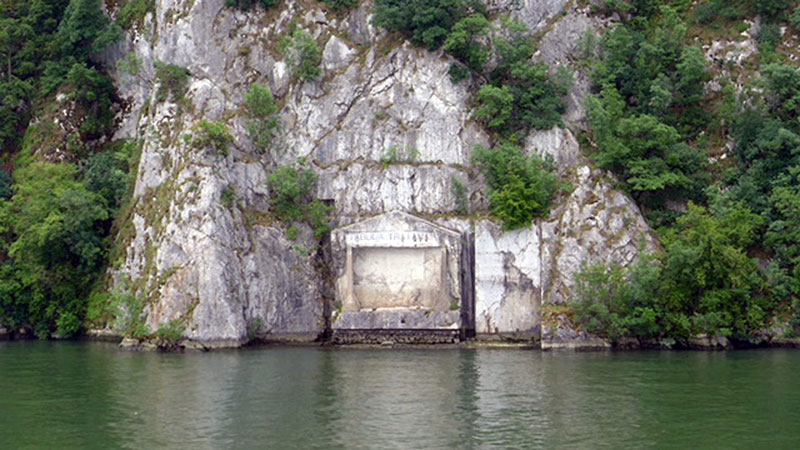
Tabula Traiana, located in the Djerdap Canyon and Iron Gate in Serbia, is the Roman memorial plaque dedicated to the Roman Emperor Trajan. He is said to have started to build the first bridge across the Danube in 103 AD. Trajan‘s bridge has disappeared, but the first two pillars are still visible on the banks of the river.
The 300-year-old Schönbrunn Palace was built during the reign of Empress Maria Theresa, the only female ruler of the Hapsburg dominion. (Her youngest daughter was the famous Marie Antoinette, the last queen of France.) This summer palace had 1,441 rooms and delightful gardens. The Empress was quite skilled in annexing lands to her kingdom, either by battle or by marrying her daughters off with other royals. She did not even mind that her husband Francis I had girlfriends on the side, as long as they were wealthy and she was able to collect taxes from them.

A relatively recent rock sculpture of Decebalus, the last king of Dacia, who fought the Roman emperors Domitian and Trajan, to preserve the independence of his country, now Romania. It is located on the border between Romania and Serbia. It took 10 years and 12 sculptors to make, from 1994-2004.
On the stretch of the Danube between Bratislava and Budapest is the ancient city of Esztergom, the religious and political center in Hungary in the 12th century. The domed basilica, located on top of a hill, was the symbol of the strength of the Hungarian Catholic Church. This massive cathedral took 49 years to complete, finished with Carrara marble and paintings by Italian masters. It wanted to be a copy of the Vatican, but due to funding problems, fell short.
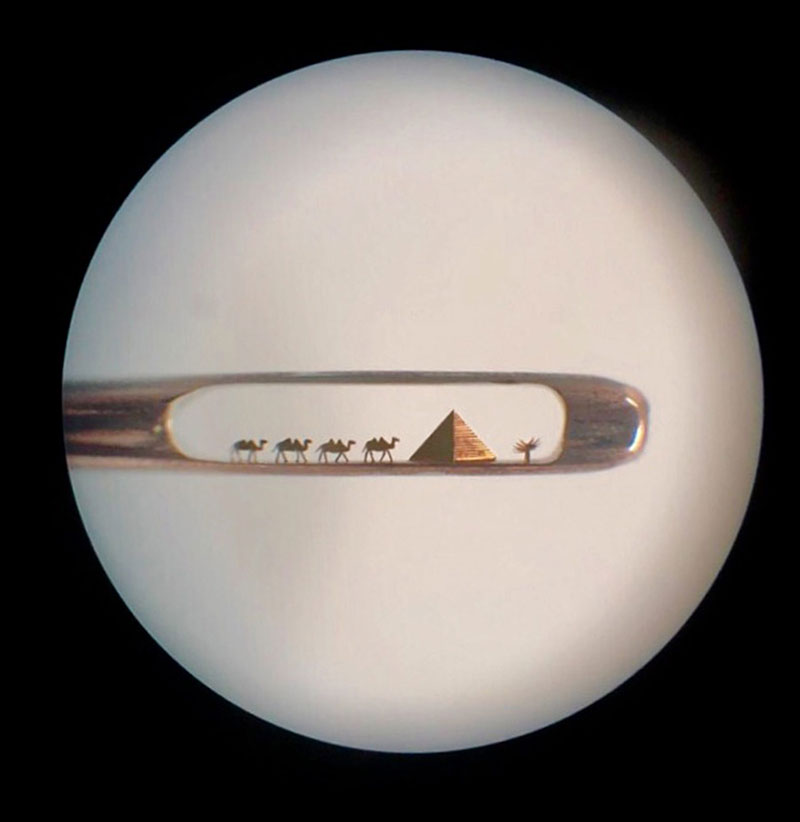
Art in the eye of a needle. The Micro Wonder museum features the world’s smallest art pieces made by Mykola Syadristy, a Ukrainian artist, located in Szentendre, Hungary. The town itself has colorful houses and lampshaded street lights.
Kalocsa, also in Hungary, has the ideal soil for cultivating the peppers used to make paprika, and has a museum dedicated to it. Their beloved King Stephen I (canonized in 1803) made Kalocsa a bishopric and its cathedral and archbishop’s palace is an impressive symbol of the power and wealth even of a local potentate. The splendid library includes medieval manuscripts and a bible signed by Martin Luther.
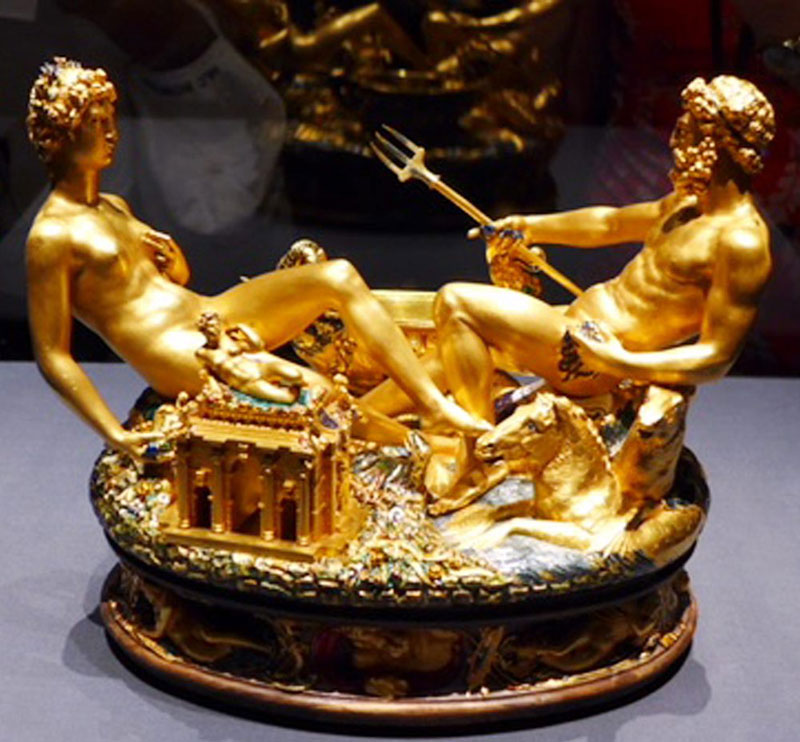
The Saliera by Bienvenuto Cellini, in gold, enamel, ebony and ivory, is his only extant work during his lifetime. Far more than a precious salt and pepper container, it is an allegory of the cosmos, represented by deities Neptune (sea) and Tellus (earth). This, among other breathtaking pieces, is from the priceless Hapsburg collection on display at the must-not-be-missed Museum of Fine Art in Vienna.
Throughout its history, the capital of Serbia, Belgrade, has been in the center of conflicting civilizations and has changed hands several times. We were told that, since its first mention nearly 2,500 years ago, the city has been destroyed 44 times. The Church of St. Sava is the world’s largest Orthodox place of worship.
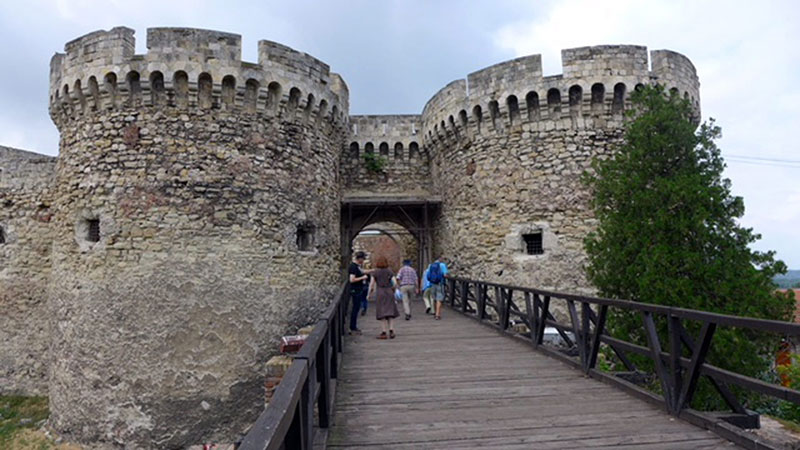
The Zindian Gate of the Petrovaradin Fortress in Novi Sad, Serbia. Dubbed as the “Gibraltar of the Danube,” it was the largest fortress in Europe in the 17th century.
Budapest was the most important city of the Danube, even during the Roman times. Called Aquincum 2,000 years ago, it was used as an important trade route. The city has 15 bridges over the Danube, six bridges of which were bombed by the Nazis, who were also responsible for killing 600,000 Hungarian Jews.

Truly, a beautiful Budapest and a dramatic way to be on a river boat at night. The Parliament is one of a parade of buildings all lit up on the Danube.
Contrasting, yet complementary, Buda on the west bank (named after the brother of Attila the Hun) and Pest on the east (meaning kiln or furnace) have different characters, yet their diversity is what makes a visit to the Hungarian capital so stimulating. Buda’s hills provide a magnificent riverside setting for its venerable buildings, while the wide avenues of Pest are laced with 19th century architecture.
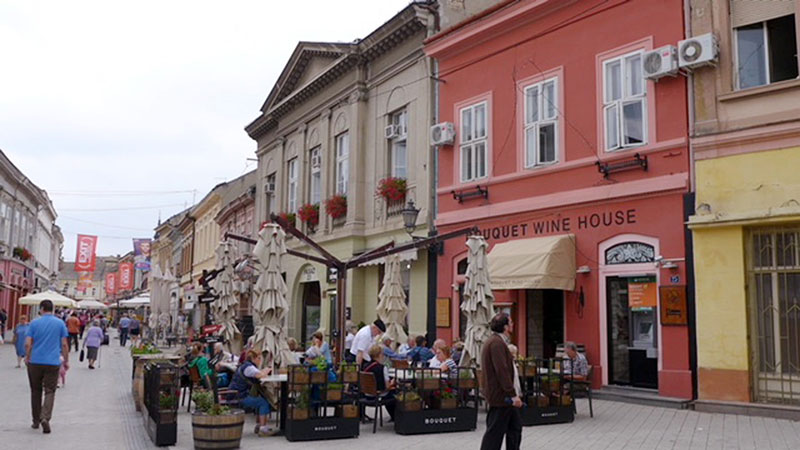
Novi Sad is nicknamed the “Serbian Athens” with its Baroque and Neo-classical buildings, a city where intellectuals, traders, and craftsmen converged.
The boat docked in cities that I have never even heard of, or have only read in books —Esztergom, Vukovar, Belgrade, Novi Sad, Mohács, Kalocsa, Bratislava. Sharing a kindred history, these cities were ruled by powerful monarchs like the Hapsburgs, attacked by the Ottomans, taken over by Hitler’s cruelty, controlled by the Russians, and finally gained independence. They were all linked by one, powerful body of water: the Danube.
* * *
Please tell me where to Walk the Talk: cecilialicauco2@gmail.com and cecilialicauco2 on Instagram.



















